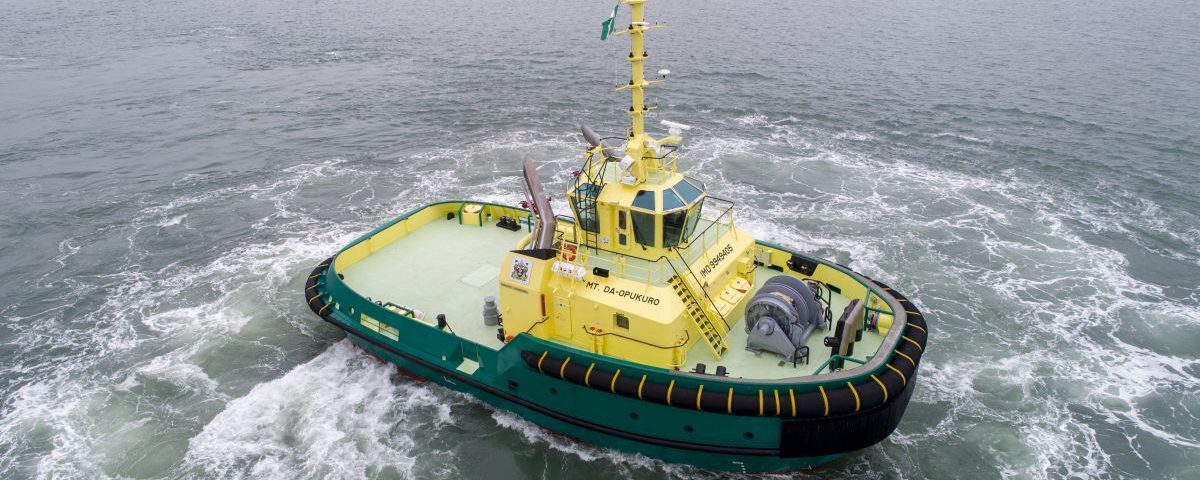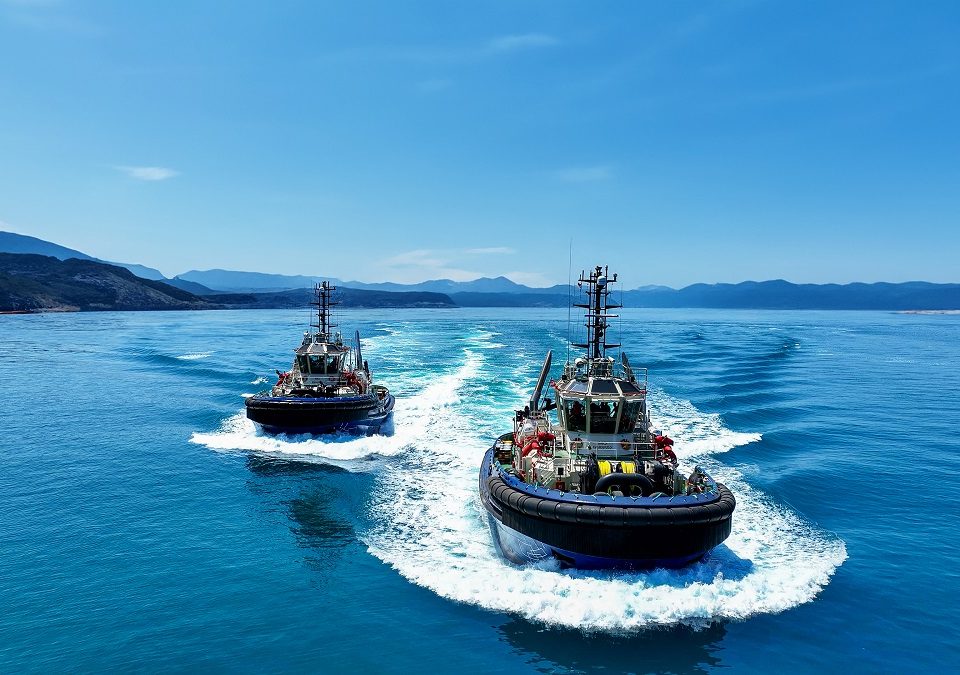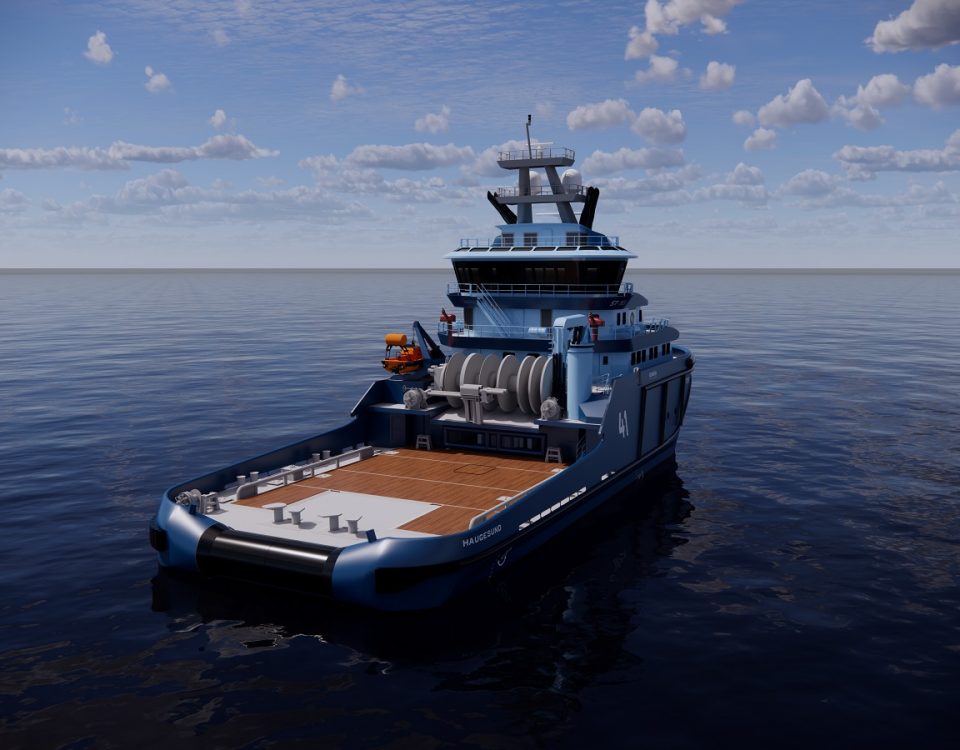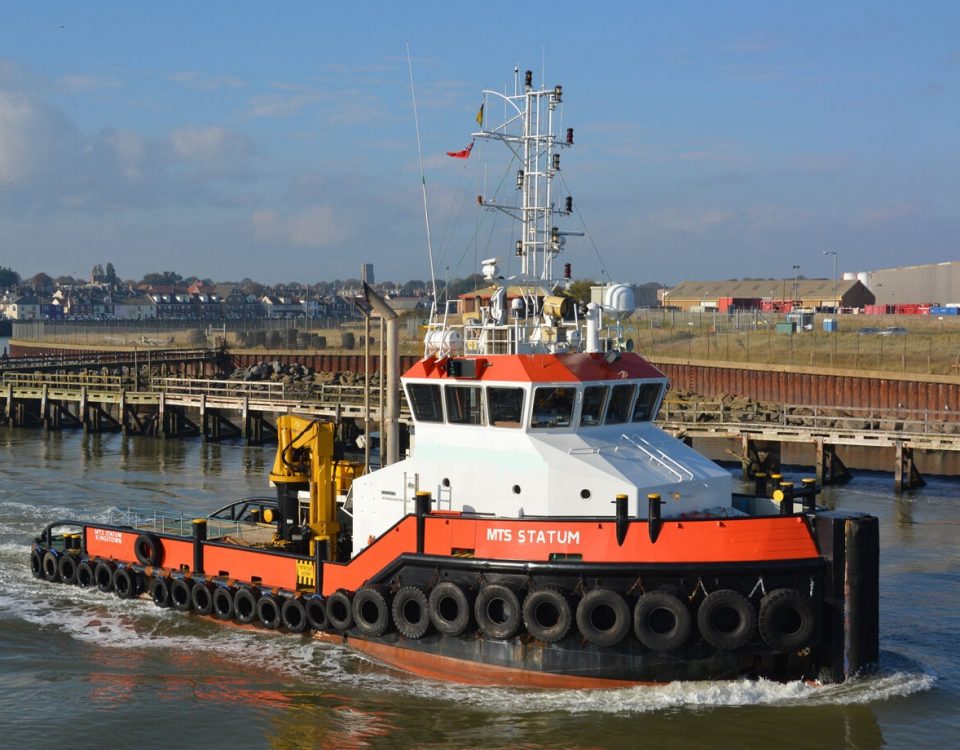This website uses cookies so that we can provide you with the best user experience possible. Cookie information is stored in your browser and performs functions such as recognising you when you return to our website and helping our team to understand which sections of the website you find most interesting and useful.
Depasa Marine enters towage sector with new escort tugs

National Energy Corporation of Trinidad & Tobago takes delivery of Damen ASD Tug 2811
07/03/2023
New tug arrives in Esperance, Australia
08/03/2023Two ASD tugboats will join a fleet of dredgers and workboats in Nigerian ports.
Damen Shipyards has designed and built two escort harbour tugs for Depasa Marine International for operation in the seaports of Nigeria. It built azimuth stern drive (ASD) tugs Mai Koko and Da-Opukuru to ASD 2813 design in January and they are being sailed to Nigeria to become the first tugs in the company’s fleet.
Depasa Marine provides dredging, surveys, port services and wreck removals in Nigeria. It has agreements with Nigerian Port Authorities, Niger Dock and Puma Industry and is the technical partner of Lagos Channel Management, responsible for dredging, aids to navigation, water pollution monitoring and marine operations within the Lagos pilotage area.
Depasa Marine has strategic collaborations with Damen Shipyard, Transport and Offshore Services and Celleton. It operates six dredgers, 10 work and support boats and now two harbour tugs.
Mai Koko and Da-Opukuru are sister tugs, with an overall length of 28 m, a beam of 13 m, a hull depth of 5 m and a draught at the aft of 6 m.
These 381-gt tugs have two Caterpillar-manufactured Cat 3516C TA HD engines, with power of 2,525 kW at 1,800 rpm, driving two Kongsberg Maritime azimuth thrusters of type US 255 P30/P35 with a fixed-pitch propeller diameter of 3,000 mm.
During sea trials, Mai Koko achieved bollard pull ahead of 81 tonnes and bollard pull astern of 75 tonnes, speed ahead of 13 knots and astern of 12 knots.
With the same propulsion equipment, Da-Opukuru delivered 82 tonnes of bollard pull ahead, 76 tonnes astern, speed ahead 13 knots and speed astern of 12 knots.
Lloyd’s Register classed these as escort tugs with FiFi1 fire-fighting systems, unmanned machinery spaces and in-water survey allowing them to carry out towing, mooring, escorting and fire-fighting operations.
Their fire-fighting units include two pumps driven by the main engines, each pumping 1,200-1,400 m3/hr and feeding water/foam mixes through two monitors.
Each tug has two Caterpillar C4.4 TA generator sets of 107 kVA, producing 400 V of electricity at 50 Hz. They have two Azcue CA 50/3A general service pumps, a Kaeser EPC 440-100 air compressor, an Azcue CA 32/05 oily-bilge, water-stripping pump, two CJC PTU3 27/81 fuel oil purifiers and an Azcue CA40-1B fuel transfer pump. The box cooling has an anti-growth system and the hydraulic system includes pumps driven by the main engines.
Deck equipment include a hydraulically driven, two-speed, double-drum towing winch, with a pull of 27 tonnes, at up to 31 m/min and a high-speed pull at 49 m/min and a 200-tonne brake.
Each has two electrically driven DMC anchor winches, a fore towing hook and aft towing hook, each with a safe load of 86 tonnes and an electrically driven aft capstan capable of 5 tonnes at 15 m/min.
Fendering includes D-shaped fenders on the sides, cylindrical fenders at the transom corners and cylindrical and W-block fenders on the bow.
The air-conditioned accommodation on both tugs is for 10, including crew and contractors, with a captain’s cabin, chief engineer’s cabin, four double-crew cabins, galley, mess/dayroom, dry store, ship office and sanitary facilities. The wheelhouse is insulated and has an acoustical ceiling.
These tugs can store 98 m3 of fuel oil, 17 m3 of fresh water, 2.4 m3 of clean lubrication oil and of dirty oil and 5.6 m3 of bilge water, 8.4 m3 of sewage and 9.5 m3 of foam.
(Source: Riviera by Martyn Wingrove)





